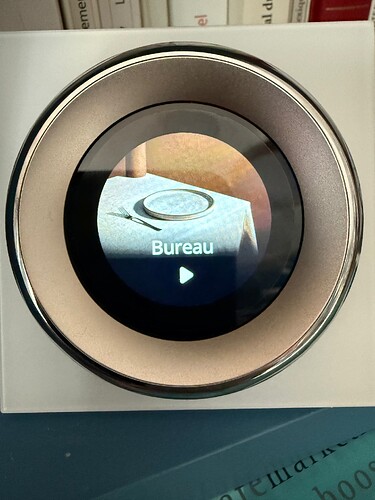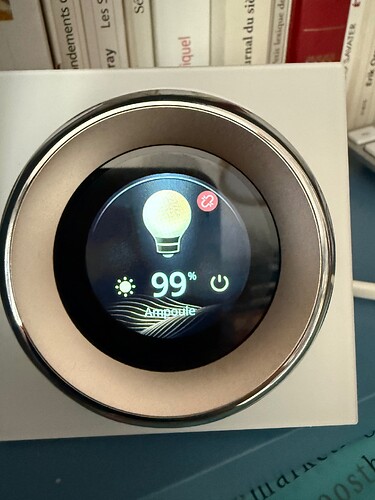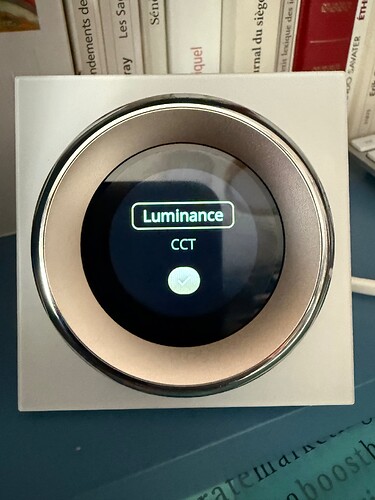Aqara Touchscreen Dial V1: Where Design Meets Smart-Home Curiosity
Some smart-home devices you buy because you need them… and others simply because they spark curiosity.
The Aqara Touchscreen Dial V1 clearly falls into the latter category.
When I first came across it on Aqara France’s web store under the more formal name “Aqara Touchscreen Dial V1 EU”. I immediately thought: “There’s something special hidden behind this one.”
Not Just a Switch
The Touchscreen Dial V1 fits into a standard 55 mm wall box, but beware it requires a neutral wire, something not always present in European electrical systems.
![]() Without it, you simply can’t install the device.
Without it, you simply can’t install the device.
A quick setup tip:
For configuration, I often use a temporary power cable connected to a wall socket just long enough to pair and set up the device before mounting it in the wall.
![]() This method is strictly temporary and unofficial, but it makes initial setup far easier.
This method is strictly temporary and unofficial, but it makes initial setup far easier.
Design That Impresses at First Sight
From the very first moment you power it on, the device exudes elegance.
Its haptic feedback rotary dial feels precise, responsive, and genuinely premium reminiscent of luxury thermostats.
At the center lies a 2.08-inch LCD touchscreen, displaying four clearly labeled control zones that you can fully customize.
The interface is crisp, bright, and remarkably intuitive.
And Aqara didn’t stop there it added several thoughtful touches:
- A temperature and humidity sensor to monitor room comfort.
- A proximity sensor with adjustable detection range that wakes the screen as you approach.
- Dual-band Wi-Fi (2.4 GHz and 5 GHz) support, a rare and welcome feature.
- Multiple customizable idle screens, including clock, local weather, or live room climate data.
A small side button on the frame lets you wake or put the device to sleep, a discreet but practical detail.
Underneath, two output lines (L1 and L2) can control physical circuits, or you can configure the Dial purely as a virtual controller, triggering scenes and automations through the Aqara Home app.
A Beautiful Device… with Frustrating Limits
After several days of daily use, I have to admit: the experience isn’t flawless.
The Dial V1 is impressive, but its software and ecosystem limitations sometimes hold it back.
1. Matter Compatibility: Not Quite There Yet
One of my biggest disappointments.
I added an Eve Thermostat to my Aqara M3 Hub using Matter, expecting seamless integration.
Sadly, the Touchscreen Dial can’t directly control Matter-based third-party devices.
The only workaround is to use Aqara Scenes as intermediaries — which drastically limits interactivity and flexibility. if you have a solution let me know .
2. HomeKit Integration: Functional but Frustrating
HomeKit compatibility works fine.
The Dial exposes six virtual buttons that can trigger automations.
However, there’s a big usability flaw: a single tap triggers an action, but a second tap doesn’t toggle it back.
In my setup, I had to create a custom Shortcut that checks the light’s current state before toggling it effectively simulating an on/off switch.
It works, but it’s far from user-friendly.
3. Visual Interface: Beautiful, Yet Constrained
Each scene or device is displayed as a card on the screen.
Long names overflow, so you’ll want to shorten them manually and choose clear icons.
But the biggest annoyance? The background images are fixed.
You can’t change them my “Office” scene shows… a dinner table with a plate on it. ![]() (Bureau means Office in French).
(Bureau means Office in French).
A small detail, but one that breaks the otherwise polished visual harmony.
4. User Interface Design: Needs Refinement
I understand the constraints of a small screen, but Aqara could have done better.
Take my Aqara T2 smart bulb, for example.
By default, the dial adjusts brightness , perfect.
But if you want to change color or color temperature (CCT), you must tap a tiny icon, then navigate through a sub-menu (Light → Color → CCT).
A simple double-tap shortcut could have made this instant.
It’s the accumulation of these small UX missteps that makes the overall experience less fluid than it should be.
Final Thoughts
The Aqara Touchscreen Dial V1 is gorgeous, well-engineered, and brimming with potential, yet it’s also constrained by software limitations.
It shines in a fully Aqara-based smart home — but struggles to deliver on its promise of Matter interoperability.
If Aqara truly wants this Dial to become the universal smart-home command center, it must expand support for third-party Matter devices.
Hope this is helpful


